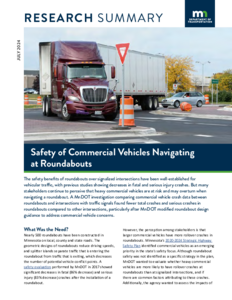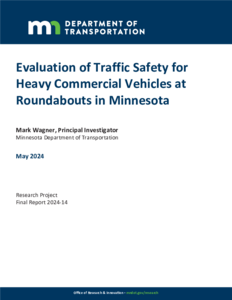Mini-Roundabout FAQs
Date Created
2024-07
Report Number
2024RIC03
Description
Evaluation of Traffic Safety for Heavy Commercial Vehicles at Roundabouts in Minnesota
Creator
Date Created
2024-05
Report Number
2024-14
Description
Traffic Safety Evaluation of Pedestrians and Bicyclists at Roundabouts in Minnesota
Date Created
2023-10
Report Number
2023-36
Description









